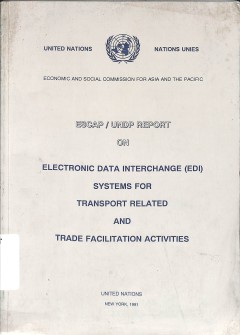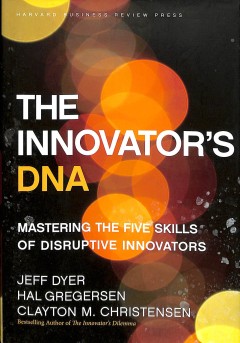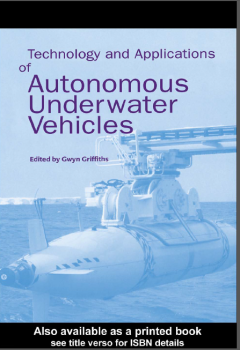Ditapis dengan

Engineering Economy Fifth Edition
- Edisi
- -
- ISBN/ISSN
- 0-13-277491-7
- Deskripsi Fisik
- 589 p
- Judul Seri
- -
- No. Panggil
- TXT SC THU e
- Edisi
- -
- ISBN/ISSN
- 0-13-277491-7
- Deskripsi Fisik
- 589 p
- Judul Seri
- -
- No. Panggil
- TXT SC THU e

The Huawei Story
- Edisi
- -
- ISBN/ISSN
- 978-93-515-0068-1
- Deskripsi Fisik
- 244
- Judul Seri
- -
- No. Panggil
- TXT IC TAO t
- Edisi
- -
- ISBN/ISSN
- 978-93-515-0068-1
- Deskripsi Fisik
- 244
- Judul Seri
- -
- No. Panggil
- TXT IC TAO t

The Reengineering Revolution
- Edisi
- -
- ISBN/ISSN
- -
- Deskripsi Fisik
- 336 p
- Judul Seri
- -
- No. Panggil
- TXT IC HAM t
- Edisi
- -
- ISBN/ISSN
- -
- Deskripsi Fisik
- 336 p
- Judul Seri
- -
- No. Panggil
- TXT IC HAM t

The Office Procedures and Techonology
- Edisi
- -
- ISBN/ISSN
- 0-538-11353-7
- Deskripsi Fisik
- 758 p
- Judul Seri
- -
- No. Panggil
- SC TXT THE o
- Edisi
- -
- ISBN/ISSN
- 0-538-11353-7
- Deskripsi Fisik
- 758 p
- Judul Seri
- -
- No. Panggil
- SC TXT THE o

Key performance indicators : the 75 measures every manager needs to know
By identifying and describing the most powerful financial and non-financial KPIs, this book will make life easier for you by defining them, explaining how and when they should be used and providing a rich library of KPIs that have been proven to significantly improve performance.
The book presents case examples to illustrate t…
- Edisi
- -
- ISBN/ISSN
- 978-0-273-75011-6
- Deskripsi Fisik
- xxviii, 347 p., ; illus : 24 cm ; index
- Judul Seri
- -
- No. Panggil
- 658.4013 MAR k

Manager's guide to social media
Facebook, Twitter, and YouTube have changed everything. Some managers fear their employees will waste entire days using online social media. Smart managers, though, understand that social media is a powerful tool for engaging customers and growing their business.
- Edisi
- -
- ISBN/ISSN
- 978-0-07-175433-0
- Deskripsi Fisik
- xiii,193 p, 23 cm; index
- Judul Seri
- -
- No. Panggil
- 006.7024 KLO m

Virtual logistics- transport in the marketspace
While transport seems to be increasingly constrained in its mission to supply services which are continuous, costless and available in all directions, the telecommunications system seems to have no such constraints and to be developing ever more rapidly in terms of inter‐connectivity, falling costs and multi‐directionality. It would seem to be impossible to contemplate the future demand for…
- Edisi
- Vol. 28 No. 7, 1998, pp. 547-574,
- ISBN/ISSN
- 0960-0035
- Deskripsi Fisik
- 30 p.
- Judul Seri
- International Journal of Physical Distribution & Logistics Management
- No. Panggil
- ATC LO CRO v C.1

Computers in retailing
Major changes have taken place in the application of information technology in retailing. Looks at the opportunities for improving use of data within the retail environment through modern technology in the early 1980s
- Edisi
- Vol. 29 No. 7/8, 1999, pp. 465-476.
- ISBN/ISSN
- 0960-0035
- Deskripsi Fisik
- 14 p .
- Judul Seri
- International Journal of Physical Distribution & Logistics Management
- No. Panggil
- ATC LO WAL c C.1

Managing Service Quality: An International Journal Determinants and conseque…
The purpose of this study is to investigate the antecedents and consequences of consumer satisfaction with the use of self-service technology (SST) in a retail setting. Design/methodology/approach – In cooperation with a survey firm, a total
- Edisi
- Vol. 22 No. 2, 2012 pp. 128-144
- ISBN/ISSN
- 0960-4529
- Deskripsi Fisik
- 20 p.
- Judul Seri
- Managing Service Quality: An International Journal
- No. Panggil
- ATC LE CHI m C.1

ESCAP/UNDP report on Electronic data interchange (EDI) systems for transport …
- Edisi
- -
- ISBN/ISSN
- -
- Deskripsi Fisik
- 67 p., 33 cm ; Annex;
- Judul Seri
- -
- No. Panggil
- TXT PO UNI e
- Edisi
- -
- ISBN/ISSN
- -
- Deskripsi Fisik
- 67 p., 33 cm ; Annex;
- Judul Seri
- -
- No. Panggil
- TXT PO UNI e

Unctad Trainfortrade Port training Proramme English-Speaking network "Modern …
- Edisi
- -
- ISBN/ISSN
- -
- Deskripsi Fisik
- 22 p., : illus : table : 30 cm
- Judul Seri
- -
- No. Panggil
- TD REP DIS u
- Edisi
- -
- ISBN/ISSN
- -
- Deskripsi Fisik
- 22 p., : illus : table : 30 cm
- Judul Seri
- -
- No. Panggil
- TD REP DIS u

The innovator's DNA : mastering the five skills of disruptive innovators
You can be as innovative and impactful — if you can change your behaviors to improve your creative impact. In The Innovator’s DNA, authors Jeff Dyer, Hal Gregersen, and bestselling author Clayton M. Christensen (The Innovator’s Dilemma, The Innovator’s Solution) build on what we know about disruptive innovation to show how individuals can develop the skills necessary to move progressive…
- Edisi
- -
- ISBN/ISSN
- 978-1-4221-3481-8
- Deskripsi Fisik
- vi, 296 p, 24 cm; index
- Judul Seri
- -
- No. Panggil
- LC 658.4063 DYE t

Innovation and dynamic capabilities in a traditional service sector Evidence …
The purpose of this paper is to analyse the types and the nature of innovations developed by small companies in a traditional service sector, as well as the ways that innovations impact their strategic capabilities.
- Edisi
- Vol. 6 No. 3, 2011 pp. 320-341
- ISBN/ISSN
- 1746-5265
- Deskripsi Fisik
- 24 p.
- Judul Seri
- Baltic Journal of Management
- No. Panggil
- ATC MR TSE i

Hatchcoverless container ships: productivity gains from a new technology
The hatchcoverless container ship is an innovative design which improves cargo handling productivity. The paper develops a methodology for measuring the gains. the value which will accrue to the company over the life of the vessel.
- Edisi
- Vol. 22, No. 2, 103-114
- ISBN/ISSN
- -
- Deskripsi Fisik
- 13 p.
- Judul Seri
- Maritime Policy & Management: The flagship journal of international shipping and port research
- No. Panggil
- ATC LO BEN h

Design and development of an intelligent context-aware decision support syste…
This paper describes a case study of the research and development of an intelligent context-aware decision support system (ICADSS) prototype for real-time monitoring of container terminal operations in Hong Kong. We present the system design and development of the prototype system, and discuss the experiences and lessons learned. To the best of our knowledge, this study is the first identifiab…
- Edisi
- Vol. 49, No. 12, 15 June 2011, 3501–3526
- ISBN/ISSN
- 1366–588X
- Deskripsi Fisik
- 28 p.
- Judul Seri
- International Journal of Production Research
- No. Panggil
- ATC LO NGA d

Maritime-Port Technology and Development
The objective of this paper is to address the minimization of truck service times at container terminals while respecting a certain level of congestion. Truck congestion at terminal gates is a major concern for container terminals, especially considering the increasing volumes of goods they have to manage. Truck arrivals, if not properly managed, can result in long queues of trucks, decreasing …
- Edisi
- 27–29 OCTOBER 2014
- ISBN/ISSN
- 978-1-315-73162-9
- Deskripsi Fisik
- 247P
- Judul Seri
- MARITIME-PORT TECHNOLOGY AND DEVELOPMENT
- No. Panggil
- TXT PO EHL m

Maritime Logistics and Supply Chain Security
Despite a hangover from the worldwide economic crisis, international trade rebounded nicely with a record-level growth in late 2010. A sharp rise in international trade has sparked the international traffic growth. A majority of this traffic growth originated from maritime logistics which could move cargoes in large volume and at cheaper freight costs. Due to its cost-efficiency and easy acces…
- Edisi
- 2012
- ISBN/ISSN
- 978-1-78052-340-8
- Deskripsi Fisik
- 27 P
- Judul Seri
- Maritime Logistics
- No. Panggil
- ATC LO MIN m

Internet of Things and business processes redesign in seaports: The case of H…
The purpose of this paper is to contribute to the extant literature about the exploitation of Internet of Things (IoT) in seaports by illustrating in detail how such IT infrastructures can impact on the redesign of their business processes. Thus, the research question of the study is: how do IoT technologies redesign the business processes of seaports?
- Edisi
- Vol. 22 No. 2, 2016 pp. 271-284
- ISBN/ISSN
- 1463-7154
- Deskripsi Fisik
- 16 p .
- Judul Seri
- Business Process Management Journal
- No. Panggil
- ATC MG FER i

Effective leadership development in information technology: building transfor…
- Edisi
- -
- ISBN/ISSN
- 0019-7858
- Deskripsi Fisik
- 10 p.
- Judul Seri
- Industrial and Commercial Training
- No. Panggil
- ATC LE HIC e
- Edisi
- -
- ISBN/ISSN
- 0019-7858
- Deskripsi Fisik
- 10 p.
- Judul Seri
- Industrial and Commercial Training
- No. Panggil
- ATC LE HIC e

Technology and applications of autonomous underwater vehicles
- Edisi
- -
- ISBN/ISSN
- 0-203-52230-3
- Deskripsi Fisik
- -
- Judul Seri
- -
- No. Panggil
- TXT PO Gri t
- Edisi
- -
- ISBN/ISSN
- 0-203-52230-3
- Deskripsi Fisik
- -
- Judul Seri
- -
- No. Panggil
- TXT PO Gri t

Supply chain tracking: aligning buyer and supplier incentives
This paper aims to present how the success of inter-organizational systems (IOS) implementation projects can be increased by aligning the different incentives of buyers and suppliers.
- Edisi
- Vol. 113 No. 8, 2013
- ISBN/ISSN
- -
- Deskripsi Fisik
- 17 p.
- Judul Seri
- Industrial Management & Data Systems
- No. Panggil
- ATC LO TAT s

Modelling the impacts of ICT adoption for inter-modal transportation
The purpose of this paper is to present a parametric model to assess the impacts of information and communication technology (ICT) applications on company freight transportation processes (i.e. “company” perspective). The aim is to support both internal monitoring procedures and the decision-making process of ICT adoption, as well as increase managers’ awareness of these solutions in impr…
- Edisi
- Vol. 42 No. 2, 2012
- ISBN/ISSN
- -
- Deskripsi Fisik
- 20 p.
- Judul Seri
- International Journal of Physical Distribution & Logistics Management
- No. Panggil
- ATC LO MAN m

A multi-criteria evaluation of container terminal technologies applying the C…
Over the recent years, the usage of containers has dramatically increased; subsequently, port container terminals annually serve more and more intensive flows, which leads to the necessity to find the ways of increasing terminal performance in order to achieve that a growing number of containers would be expeditiously served. The minimization of container handling duration in a terminal would r…
- Edisi
- Volume 27(4): 364–372
- ISBN/ISSN
- 1648-3480
- Deskripsi Fisik
- 10 p.
- Judul Seri
- Transport
- No. Panggil
- ATC LO BAR a

Internal and External Logistics Information Technology Integration
- Edisi
- Vol. 14 Iss 1 pp
- ISBN/ISSN
- -
- Deskripsi Fisik
- 17 p
- Judul Seri
- The International Journal of Logistics Management
- No. Panggil
- ATC LO CLO i
- Edisi
- Vol. 14 Iss 1 pp
- ISBN/ISSN
- -
- Deskripsi Fisik
- 17 p
- Judul Seri
- The International Journal of Logistics Management
- No. Panggil
- ATC LO CLO i

The effects of technology and TQM on the performance of logistics companies
Total quality management (TQM) and technology are fast becoming essential features of business strategy for the success of many leading organizations in the world. More and more companies are using technology and adapting TQM for sustaining competitiveness in the marketplace. TQM works well for internal integration of logistics companies and they can benefit from the use of technology, includin…
- Edisi
- Vol. 36 No. 3, 2006
- ISBN/ISSN
- -
- Deskripsi Fisik
- 22 p.
- Judul Seri
- International Journal of Physical Distribution & Logistics Management
- No. Panggil
- ATC LO YIN t

Digital manufacturing-driven transformations of service supply chains for com…
The purpose of this paper is to explore the forms that combinations of digital manufacturing, logistics and equipment use are likely to take and how these novel combinations may affect the relationship among logistics service providers (LSPs), users and manufacturers of equipment.
- Edisi
- Volume 19 · Number 4 · 2014 · 421–430
- ISBN/ISSN
- -
- Deskripsi Fisik
- 12 p.
- Judul Seri
- Supply Chain Management: An International Journal
- No. Panggil
- ATC LO PAR d

Preconditions and dynamics of logistics networks in the dutch building industry
Argues that logistics networks in the building industry will develop in relation to transaction-specific investments in new information technologies such as EDI and PDI. This is particularly the case where strategic considerations play a subordinate role and efficiency arguments are stressed. The limitations of the transaction cost approach are also discussed. In the building industry, logistic…
- Edisi
- Volume 4 . Number 3 . 1999 . 145±154
- ISBN/ISSN
- -
- Deskripsi Fisik
- 12 p.
- Judul Seri
- Supply Chain Management: An International Journal
- No. Panggil
- ATC LO VOO p

Logistics in the Internet age: towards a holistic information and processes p…
It is unquestioned that the growth of the Internet is a significant phenomenon. Not only is there an exponential growth in the exchange of goods and services over the Internet, but the Internet has changed the way information can be accessed and used. This short paper posits that the Internet has made a fundamental change in the nature of the supply chain information within an organisation. It …
- Edisi
- Volume 14 . Number 4 . 2001
- ISBN/ISSN
- -
- Deskripsi Fisik
- 9 p.
- Judul Seri
- Logistics Information Management
- No. Panggil
- ATC LO ALS l

The logistics response
The objective of any business must be to maximize share‐holder value. This can only be achieved by providing products and services which delight customers and through the commitment of all people within the business to its goals. Logistics is a means of providing effective customer service within that overall strategy and has the potential to be a significant contributor to improved value. Tr…
- Edisi
- Vol. 7 Iss 5 pp. 5 - 9
- ISBN/ISSN
- -
- Deskripsi Fisik
- 7 p.
- Judul Seri
- Logistics Information Management
- No. Panggil
- ATC LO SCR i

Physical distribution and logistics management in the digital era
Suggests that to embark upon a successful programme of globalization, an organization must combine two important business strategies: business flexibility and business standardization. Business flexibility provides business units or product managers in global companies the freedom to decide how to tailor their products and services as well as their demand/supply chain processes to the unique ne…
- Edisi
- Volume 29 Number 5 1999
- ISBN/ISSN
- -
- Deskripsi Fisik
- 59 p.
- Judul Seri
- International Journal of Physical Distribution & Logistics Management
- No. Panggil
- ATC LO POL p

Strategic logistics management
The material included is concise and to the point. The briefings have been designed in order that a range of issues and ideas can be quickly taken on board by the reader. The aim is not to explore each issue in depth, such learned papers will be published in this journal throughout the year. It is to look at the plethora of challenges facing logistics practitioners and researchers in the intere…
- Edisi
- Volume 27 Number 2 1997
- ISBN/ISSN
- -
- Deskripsi Fisik
- 72 p .
- Judul Seri
- International Journal of Physical Distribution & Logistics Management
- No. Panggil
- ATC LO SAN s

A survey based analysis of IT adoption and 3PLs’ performance
In today’s competitive scenario, effective supply chain management is increasingly dependent on third-party logistics (3PL) companies’ capabilities and performance. The dissemination of information technology (IT) has contributed to change the supply chain role of 3PL companies and IT is considered an important element influencing the performance of modern logistics companies. Therefore, th…
- Edisi
- Vol. 17 Iss 2 pp. 172
- ISBN/ISSN
- -
- Deskripsi Fisik
- 17 p.
- Judul Seri
- Supply Chain Management: An International Journal
- No. Panggil
- ATC LO EVA a

A survey based analysis of IT adoption and 3PLs' performance
In today’s competitive scenario, effective supply chain management is increasingly dependent on third-party logistics (3PL) companies’ capabilities and performance. The dissemination of information technology (IT) has contributed to change the supply chain role of 3PL companies and IT is considered an important element influencing the performance of modern logistics companies. Therefore, th…
- Edisi
- Volume 17 · Number 2 · 2012 · 172–186
- ISBN/ISSN
- -
- Deskripsi Fisik
- 17 p.
- Judul Seri
- Supply Chain Management: An International Journal
- No. Panggil
- ATC LO SWE a

Information exchange, responsiveness and logistics provider performance
The impact of information exchange on suppliers' performance is investigated in the context of trade relationships formed between manufacturers and third party providers of international logistics services. A conceptual model that predicts the important linkages among information exchange, responsiveness and performance is introduced and tested. The research shows that information exchange posi…
- Edisi
- Vol. 7 Issue: 2, pp.43-58,
- ISBN/ISSN
- -
- Deskripsi Fisik
- 18 p.
- Judul Seri
- The International Journal of Logistics Management
- No. Panggil
- ATC LO ELI i

A new fast, reliable filtering method for multiple criteria decision making
This paper aims to introduce a new method for the evaluation and selection (filtering) of alternatives in a complex multi-criteria decision environment.
- Edisi
- Vol. 49 No. 5, 2011
- ISBN/ISSN
- -
- Deskripsi Fisik
- 15 p.
- Judul Seri
- Management Decision
- No. Panggil
- ATC MG WAL a

Economies of speed in sea transportation
Conventionally, shipping companies have invested in large ships to achieve economies of scale. More recently, high speed ships have been proposed as a means of achieving timely service for customers and improving shipping performance. Yet another solution offered here is to boost the cargo handling speed at port allowing for a higher number of annual round trips. Both the cost efficiency and ti…
- Edisi
- Vol. 24 No. 8, 1994, pp. 33-41
- ISBN/ISSN
- -
- Deskripsi Fisik
- 12 p.
- Judul Seri
- International Journal of Physical Distribution & Logistics Management
- No. Panggil
- ATC LO VES e

Development Of Multi-Fuel, C For Maritime Combat Craft
- Edisi
- Volume 10
- ISBN/ISSN
- 2056-8487
- Deskripsi Fisik
- 11 p
- Judul Seri
- Journal of Marine Engineering & Technology
- No. Panggil
- ATC MR BEN d
- Edisi
- Volume 10
- ISBN/ISSN
- 2056-8487
- Deskripsi Fisik
- 11 p
- Judul Seri
- Journal of Marine Engineering & Technology
- No. Panggil
- ATC MR BEN d

Integration of information technology and organizations in a supply chain
Ever since the Council of Logistics Management (CLM) adopted the definition of logistics in 1986, the integration of somewhat disparate activities of transportation, procurement, inventory control, distribution management, and customer service has been a major thrust in many firms. Realizing the synergy that exists in these functions, many companies have extended the concept further upstream an…
- Edisi
- Vol. 14 Issue: 1, pp.89-108
- ISBN/ISSN
- -
- Deskripsi Fisik
- 23 p.
- Judul Seri
- The International Journal of Logistics Management
- No. Panggil
- ATC LO BAG i

Toward Creating Competitive Advantage With Logistics Information Technology
Purpose – Successfully implementing and exploiting the right information technologies is critical to maintaining competitiveness in today’s supply chain. However, simply adopting off-the-shelf technologies may not necessarily induce this competitiveness unless the organization combines these technologies with additional complimentary resources. This study draws on the logistics innovatio…
- Edisi
- Vol. 42 Iss 1 pp
- ISBN/ISSN
- 0960-0035
- Deskripsi Fisik
- 31 p
- Judul Seri
- International Journal of Physical Distribution & Logistics Management
- No. Panggil
- ATC LO HAZ t

Inter-organizational IT use, cooperative attitude, and inter-organizational c…
Today’s supply chains face increasing vulnerabilities; effective management of disruptions is critical to an organization’s ability to weather disruptive events and remain competitive. Contingency planning is a method of risk management that promotes effective crisis management. This research tests proposed antecedents of contingency planning effectiveness in a supply chain setting.
- Edisi
- Vol. 23 No. 1, 2012 pp. 50-76
- ISBN/ISSN
- -
- Deskripsi Fisik
- 30 p.
- Judul Seri
- The International Journal of Logistics Management
- No. Panggil
- ATC LO HAN i

Task-technology fit for reverse logistics performance
Information technology is a key enabler of logistics performance. Unfortunately, most logistics information systems are implemented with forward logistics processes in mind, with little, if any, consideration for the reverse channel. Informed by task‐technology fit theory, the authors aim to explore how use of complementary information technologies to support reverse logistics processes can l…
- Edisi
- Vol. 24 Issue: 2, pp.230-246
- ISBN/ISSN
- -
- Deskripsi Fisik
- 18 p.
- Judul Seri
- The International Journal of Logistics Management
- No. Panggil
- ATC LO HUS t

Integrated logistics information system in Korea
The transport infrastructure will provide the necessary capacity for freight movement and handling. However, the increase in the physical infrastructure alone is not a sufficient condition for the improvement of logistics systems. The logistics information capability which facilitates the seamless flow of information is a very important element in further enhancing the efficiency of logistics a…
- Edisi
- Vol. 10 Issue: 1, pp.43-51
- ISBN/ISSN
- -
- Deskripsi Fisik
- 11 p.
- Judul Seri
- Logistics Information Management
- No. Panggil
- ATC LO KAN i

The importance of information technology in port terminal operations
Information technology has become an essential part of the rapid and accurate transfer and processing of enormous volumes of data processed in international transport firms and port organisations. The proper management of systems, which process this information and communicate it to those who manage port operations, is vital for efficient transport. This explains why container-tracking systems …
- Edisi
- Vol. 30
- ISBN/ISSN
- -
- Deskripsi Fisik
- 17 pages
- Judul Seri
- International Journal of Physical Distribution & Logistics Management
- No. Panggil
- ATC PO KIA t

Rosatom To Build Nuclear Technology Centre
Russia's state-owned State Atomic Energy Corporation (Rosatom) has entered a memorandum of understanding (MoU) with Vietnam for the construction of the Centre for Nuclear Energy Science and Technology (CNEST) in that country. The facility will house Russia-designed nuclear reactors, a multifunctional cyclotron, a research and development laboratory and a technology complex. The centre's…
- Edisi
- -
- ISBN/ISSN
- -
- Deskripsi Fisik
- 1 p.
- Judul Seri
- -
- No. Panggil
- BD BMI r

Philippines - Q4 2017
In July 1994, then-president Fidel Ramos approved the National Information Technology Plan. The National Information Technology Council, a predecessor of the IT & E-Commerce Council (ITECC), was set up to oversee the implementation of the plan, which was eventually called the IT Action Agenda for the 21st Century (IT21), the country's blueprint for IT development. IT21 was approved on Octob…
- Edisi
- Q4 2017
- ISBN/ISSN
- -
- Deskripsi Fisik
- 3 p.
- Judul Seri
- -
- No. Panggil
- BD BMI p

Understanding the factors affecting e-business adoption and impact on logisti…
The purpose of this paper is to conceptualize e‐business adoption and to generate understanding of the range of factors affecting the adoption process. The paper also aims at exploring the perceived impact of e‐business adoption on logistics‐related processes.
- Edisi
- Vol. 20 Issue: 6, pp.853-865
- ISBN/ISSN
- -
- Deskripsi Fisik
- 15 p.
- Judul Seri
- Journal of Manufacturing Technology Management
- No. Panggil
- ATC LO MAT u

The use of IT in freight forwarding in the UK
A survey undertaken in May 1993 analysed UK companies of various sizes, i.e. small, medium and large, in order to have a representative sample of freight forwarding companies. The response gave a good indication of the impact of IT on freight forwarding, an important part of the distribution system. The questionnaires were generally completed by managing directors, chief executives and inform…
- Edisi
- Vol. 7 Issue: 4, pp.19-22
- ISBN/ISSN
- -
- Deskripsi Fisik
- 5 p.
- Judul Seri
- Logistics Information Management
- No. Panggil
- ATC LO SAB t

The cost-to-serve method
Integrating business processes across functions is at the heart of logistics and supply chain management. The fundamentals of compressing time across the chain are well understood. There is a common expectation among logistics professionals that cost will fall out of the supply chain from such programs. The theme of supply chain management is that many businesses are not in the trade‐off zo…
- Edisi
- Vol. 9 Issue: 1, pp.69-84
- ISBN/ISSN
- -
- Deskripsi Fisik
- 18 p.
- Judul Seri
- The International Journal of Logistics Management
- No. Panggil
- ATC LO BRA t

The adoption of RFID in fashion retailing: a business value-added framework
The adoption of radio frequency identification (RFID) will create a revolutionary change in the management of a supply chain, particularly in the retail sector. The aim of this paper is to study the views of fashion retailers on RFID applications and, in turn, to analyze the added value to be gained by adopting this technology.
- Edisi
- Vol. 108 No. 5, 2008 pp. 596-612
- ISBN/ISSN
- -
- Deskripsi Fisik
- 22 p.
- Judul Seri
- Industrial Management & Data Systems
- No. Panggil
- ATC LO MOO t

Technology emergence between mandate and acceptance: an exploratory examinati…
The purpose of this paper is to focus on radio frequency identification (RFID) acceptance and examine three understudied drivers: a company’s satisfaction with existing logistics technologies, its logistics technology readiness (technology optimism and technology innovativeness), and relationship hostage position. The proposed conceptual model also investigates the impacts of RFID acceptance …
- Edisi
- Vol. 41 No. 7, 2011 pp. 697-716
- ISBN/ISSN
- -
- Deskripsi Fisik
- 22 p.
- Judul Seri
- International Journal of Physical Distribution & Logistics Management
- No. Panggil
- ATC LO KRO t
 Karya Umum
Karya Umum  Filsafat
Filsafat  Agama
Agama  Ilmu-ilmu Sosial
Ilmu-ilmu Sosial  Bahasa
Bahasa  Ilmu-ilmu Murni
Ilmu-ilmu Murni  Ilmu-ilmu Terapan
Ilmu-ilmu Terapan  Kesenian, Hiburan, dan Olahraga
Kesenian, Hiburan, dan Olahraga  Kesusastraan
Kesusastraan  Geografi dan Sejarah
Geografi dan Sejarah